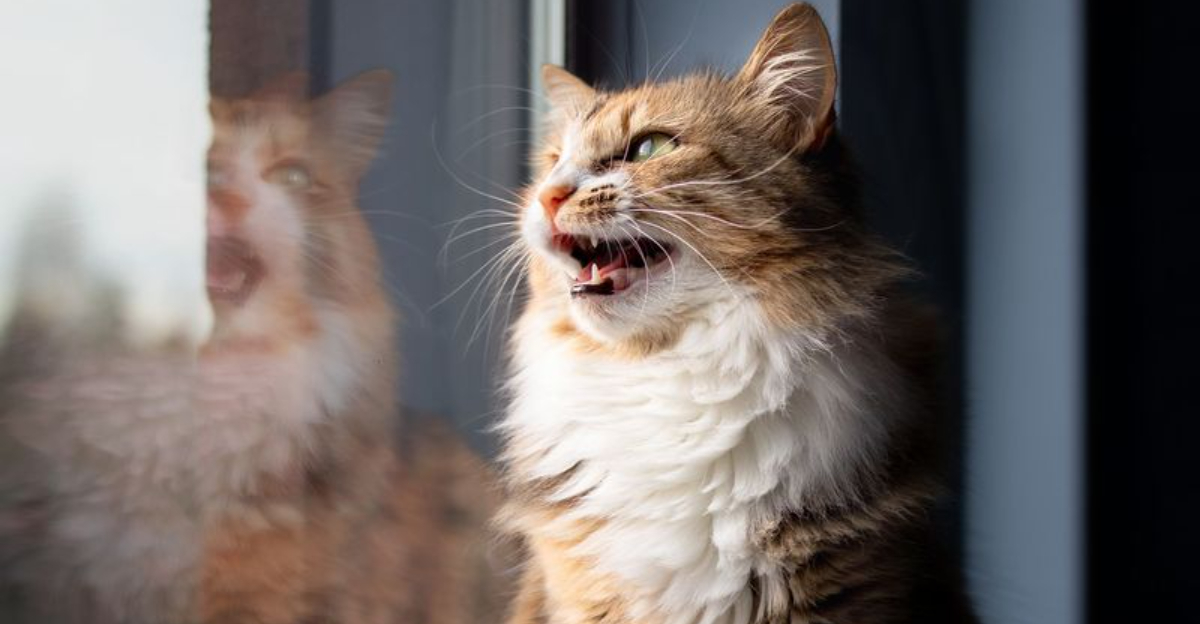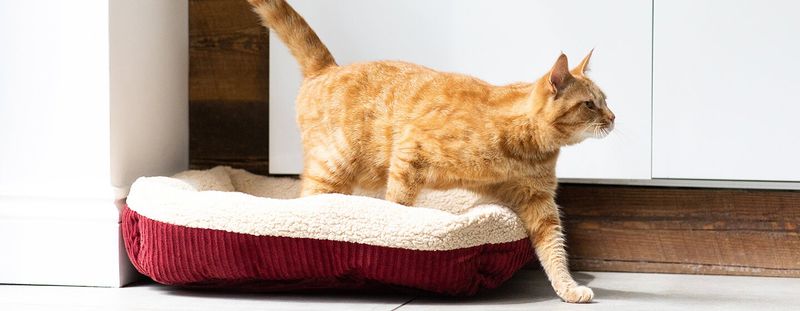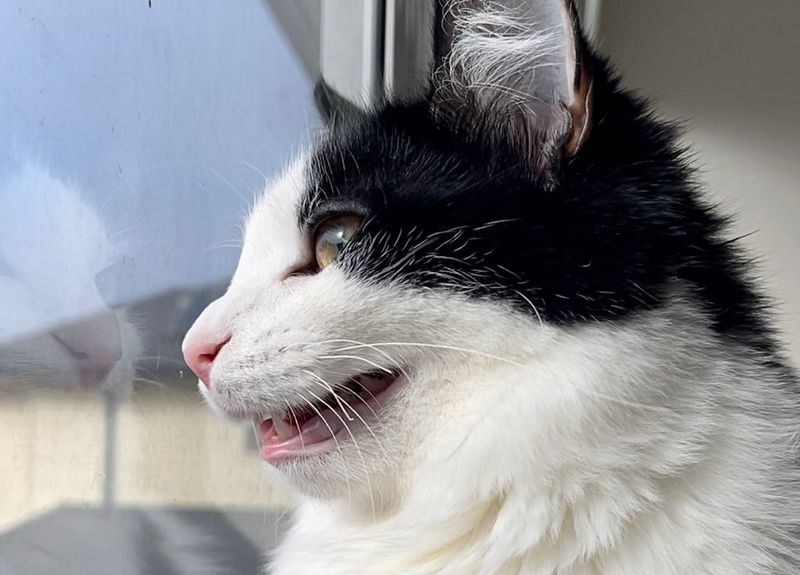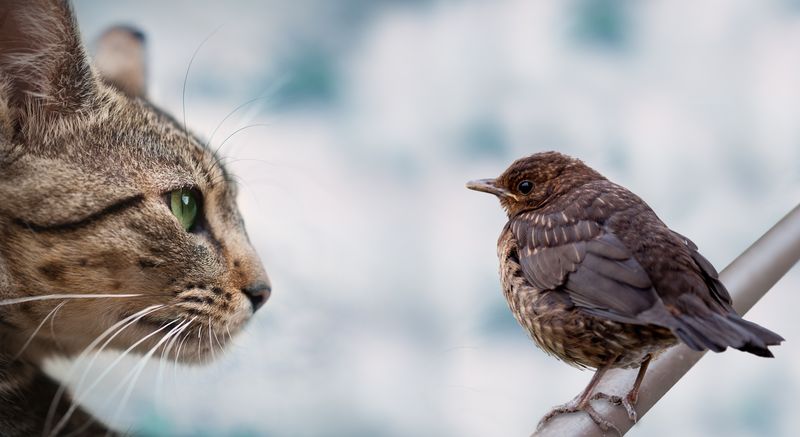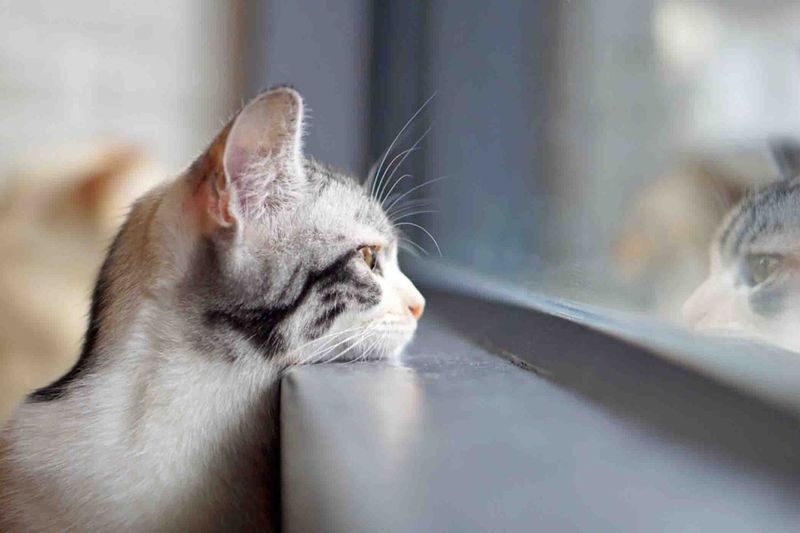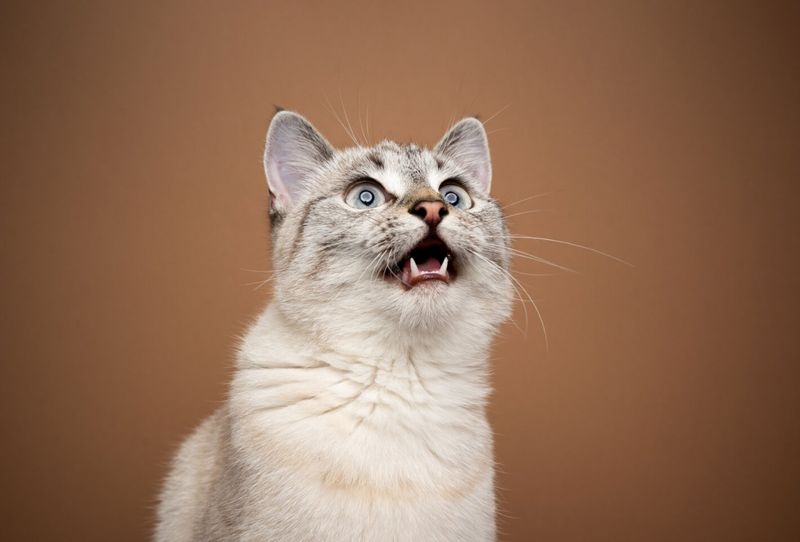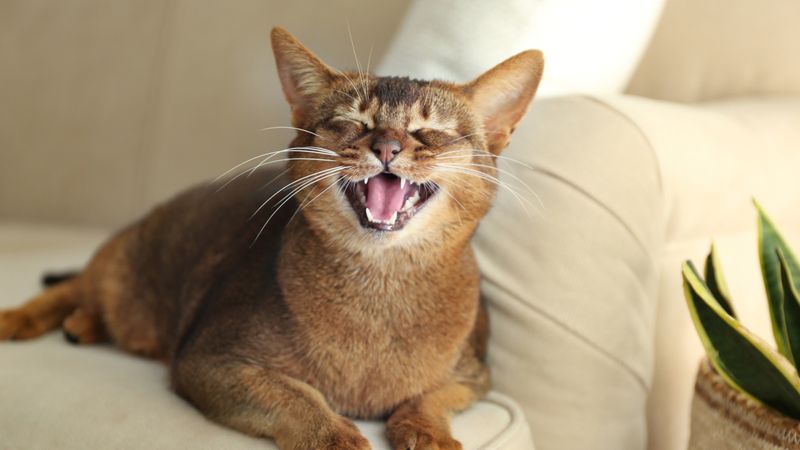📖 Table of Content:
If you’ve ever caught your cat perched on a windowsill, chattering away at a bird just out of reach, you’ve probably wondered what in the world is going on. The noise is peculiar—a mix of squeaks, chirps, and rapid-fire clicks that doesn’t resemble the usual meow. It’s equal parts hilarious and perplexing, often leaving cat owners curious about the deeper meaning behind the behavior.
Though it might sound silly or random, this “bird chatter” is actually packed with evolutionary and behavioral significance. From ancient hunting reflexes to possible mimicry, cats exhibit this sound for reasons rooted in their biology and intelligence. Researchers and feline behaviorists have put forward several compelling explanations that might finally help us decode this strange but fascinating feline habit.
Let’s dive into eight intriguing reasons why cats “chat” with birds—and explore why the sound is so downright weird to human ears.
1. Frustration and Excitement
Sometimes, that strange noise isn’t about stealth or mimicry—it’s pure emotional overload. The sight of fluttering wings just beyond reach can be both thrilling and infuriating for a cat. This dual feeling of excitement and frustration needs an outlet, and chattering provides that release. It’s not uncommon to see a cat’s body tense, tail flicking, pupils dilated while they make those rapid sounds. They might also paw at the window or move restlessly, unable to act on the instinct to pounce. These physical cues suggest the chatter is a complex mix of energy that has nowhere else to go. In this light, the noise becomes a vent for inner tension.
2. Mimicry of Bird Calls
Imitation is a powerful tool in nature, and some scientists think cats might be tapping into it. There’s a theory that cats attempt to mimic the calls of birds or other prey animals in order to draw them closer. This could make sense, especially given cats’ ability to adapt their vocalizations to communicate with humans. In fact, wild cats in some regions have been observed making vocalizations eerily similar to monkey calls in order to lure them. If domestic cats have a similar ability, it adds a whole new layer to their mysterious chattering. The sounds they make when watching birds may not be random at all. Instead, they might be intentional, strategic, and surprisingly clever.
3. Instinctual Hunting Behavior
At the core of this behavior lies the cat’s powerful predatory instinct. Unlike dogs, cats are obligate carnivores, meaning their entire biology is fine-tuned for hunting small prey like birds. When they see potential prey but can’t access it, their body instinctively kicks into a kind of rehearsal mode. That chattering jaw movement mimics the precise motion cats use when delivering a killing bite to immobilize their target. This instinct doesn’t shut off just because there’s a window in the way. Even indoor cats, far removed from the wild, retain these inherited behaviors. Watching birds may awaken an ancient rhythm—part hunting drill, part evolutionary muscle memory.
4. Predatory Anticipation
Anticipation has a physical form, and in cats, it sometimes sounds like clicking teeth. This theory suggests that the chatter is a reflexive preparation for the moment of the pounce—even if that moment never comes. Their body goes through the motions as if they were actually hunting, simulating what would happen in the wild. The twitching tail, focused eyes, and vibrating jaw all form part of this elaborate mock hunt. Because the cat can’t fulfill the next step—catching and killing—the energy is redirected into these repetitive, mechanical sounds. This is less about communication and more about the cat’s body being ready to strike. It’s a kind of internal rehearsal that comes with its own soundtrack.
5. Communication Practice
Practicing for future encounters might explain this odd behavior in younger cats. Kittens and adolescents often chatter at toys, bugs, or even shadows, honing their vocal and physical coordination. These moments may help them refine the skills they’ll use during real hunts later in life. It’s not just about pouncing but also about timing, patience, and even sound production. By vocalizing while observing prey, they could be testing their limits and experimenting with responses. Adult cats may continue this behavior out of habit or as part of a self-reinforcing learning loop. Seen this way, chatter becomes a tool in the cat’s developmental toolkit. It’s one more way they learn about their world—even from behind a pane of glass.
6. Confusion Between Vocal and Physical Reflexes
Physiological conflict may play a role when your cat suddenly breaks into chatter. Experts have suggested that the behavior could be a glitch between different neurological circuits—those that control vocalization and those used for biting. When activated simultaneously, this overlap produces that familiar stuttering, clicking noise. It’s essentially a jam in the system, where the body is unsure whether to “speak” or “strike.” Because both actions stem from the same predatory drive, they can occasionally trip over each other. What you hear is the result of that confusion—a strange fusion of voice and instinct. The effect is bizarre but perfectly natural, especially when prey is visible but unreachable.
7. Learned Behavior
Experience plays a powerful role in shaping a cat’s actions, even the weird ones. If a cat has previously “chatted” while birdwatching and received a reaction—such as praise, laughter, or curiosity—it may repeat the act for attention. Cats are keen observers of human behavior and will quickly latch onto actions that get a response. Over time, what starts as instinctive can become intentional. Some cats even appear to “announce” birds to their humans as if sharing the sighting. This creates a feedback loop: chatter leads to reaction, which reinforces chatter. In essence, your cat might be talking to you—and the bird—in the same moment.
8. Unique Individual Quirks
Every cat is a world unto itself, and their quirks reflect that individuality. Some cats chatter constantly at birds, while others remain stone-silent. This variability suggests that chattering may be as much a personal habit as a species-wide behavior. It could be influenced by breed, upbringing, personality, or even socialization with humans and other animals. What sounds odd to us may simply be part of your cat’s expressive language. Just like humans laugh in different ways, cats may have different ways of expressing arousal or focus. The chatter becomes part of their signature behavior—another charming (and strange) reminder of how unique they truly are.
